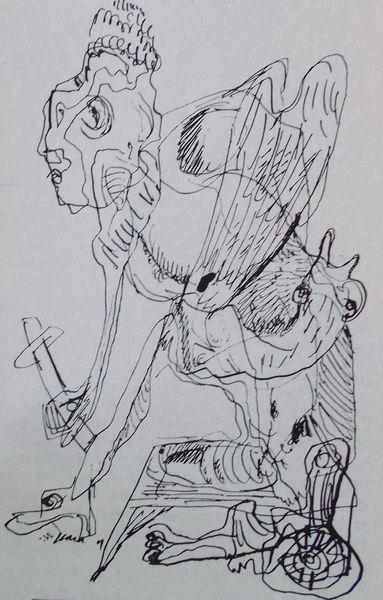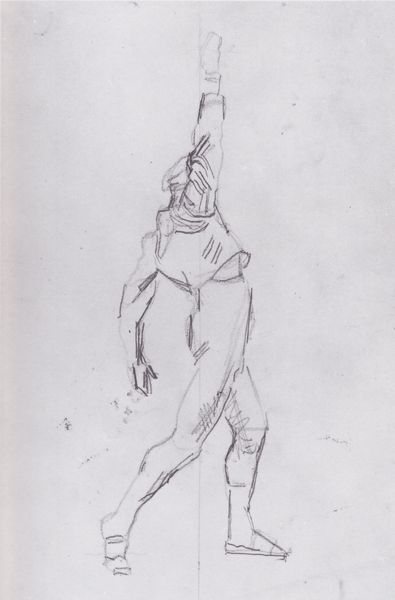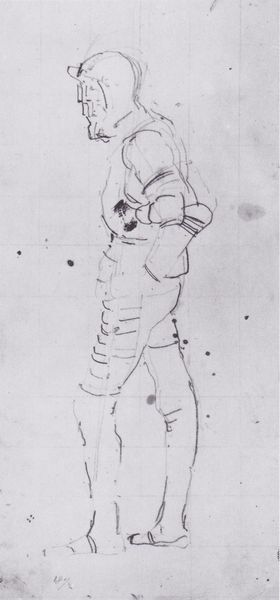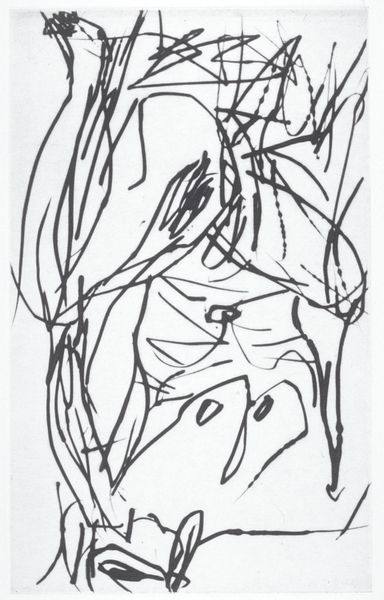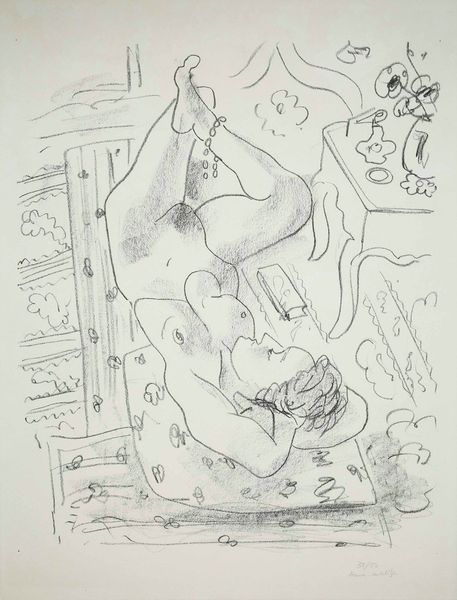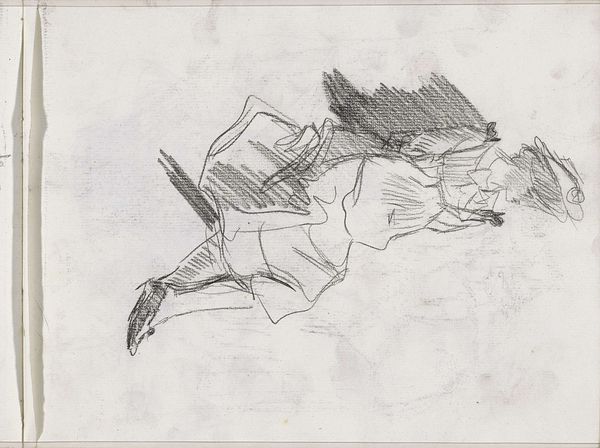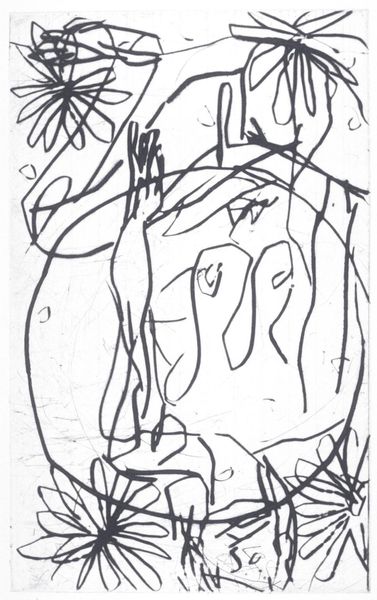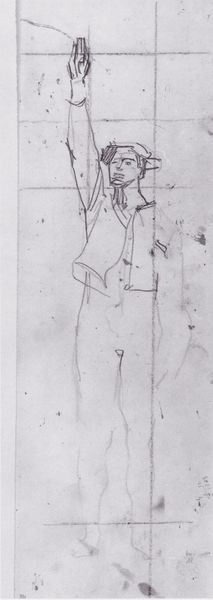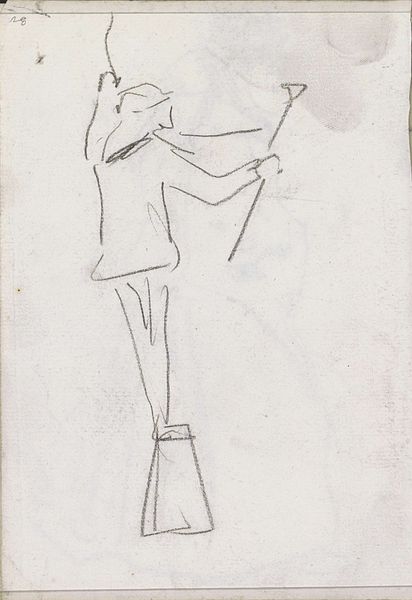
drawing, ink
#
drawing
#
figuration
#
ink
#
geometric
#
sketch
#
modernism
Copyright: Vasile Kazar,Fair Use
Editor: So, this is "Dance on the Drum," an ink drawing done in 1977 by Vasile Kazar. The loose lines create this sense of dynamic energy, but the subject matter itself feels almost…abstracted. What do you see in this piece from a historical context? Curator: Well, seeing as this drawing was produced in 1977, it comes at an interesting point in the history of modernism and abstraction. By that point, we're witnessing both its institutional acceptance and a building critique, largely related to modernism's tendency toward elitism, it’s frequently apolitical stance, and limited access in previously communist states. Does this sketch offer a vision of folk culture that engages or resists those themes? Editor: That's a good question. It's definitely figurative, hinting at movement and sound. But you're right, it is also removed in some way from direct representation. Curator: How do you think Kazar's visual language serves or subverts socialist realist values for example, since figurative themes were favored as subjects? Is he creating a new kind of folk hero, or commenting on something else entirely? Editor: Maybe it’s about preserving tradition while acknowledging that traditions transform over time? The drawing suggests a celebration of music and movement. It invites the viewer to participate imaginatively, which counters the idea of prescribed cultural experiences often found in state-sponsored art. Curator: Exactly. The sketch-like quality might be seen as a gesture toward the everyday, democratizing art-making itself. The deliberate simplification challenges traditional representational values but what message is sent by rendering the performing body as fractured and geometric, almost machine like? What could this reference to industry suggest, beyond the purely celebratory dance? Editor: I see what you mean. It’s like it’s acknowledging the influences of modern life, perhaps questioning whether "pure" folk expression is even possible in a world of industry. This makes me see the piece in a new way. Thanks! Curator: And me too! I am happy that we can observe history reflected even in fleeting sketches!
Comments
No comments
Be the first to comment and join the conversation on the ultimate creative platform.
